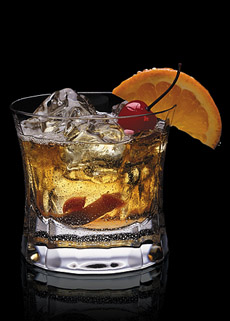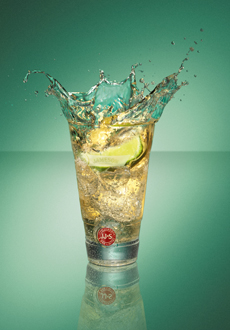Different Types Of Whiskey For World Whiskey Day
|
May 18 is World Whiskey Day. If you’re not normally a whiskey drinker, why not take a vacation from the tequila and vodka and sip a glass of: |
|
|
|
Australia, England, Germany, Japan, New Zealand, Switzerland and Thailand, all strong markets for whiskey, now produce their own. Regardless of the variety or country of origin, a general rule of thumb is that all straight whiskeys must be aged at least two years in wood, generally oak. Each nation has its own rules and regulations about what constitutes a true whiskey. Whiskey sales have skyrocketed in the past year, in both the U.S. and abroad. In the U.S., bourbon and Tennessee whiskey led the growth. American whiskies also accounted for 70% of the total U.S. spirits exports for 2012. See all the different types of whiskey in our Whiskey Glossary. If you don’t want to drink a glass, use whiskey in a recipe. It adds dimension to sauces for meats and in desserts like cake, ice cream and mousse. You can even make a whiskey vinaigrette: Add a tablespoon to any recipe. Canadians spell “whisky” without the “e,” as do the Scots and most other countries except Ireland and the U.S. Scholars can’t determine why the “e” was dropped by the Scots many centuries ago. One theory is that the Irish made whiskey first and pronounced it with a broad “e.” When the Scots began to make it, they dropped the “e” to differentiate their product. A 1968 directive of the Bureau of Alcohol, Tobacco and Firearms specifies “whisky” as the official U.S. spelling, but allows the alternative spelling, “whiskey,” which most U.S. producers prefer. |
||
 An Old Fashioned is based on the earliest known American cocktail. Photo courtesy Maker’s Mark. |
OLD FASHIONED COCKTAIL RECIPE Here’s an easy way to enjoy World Whiskey Day: with a classic Old Fashioned cocktail. The recipe is courtesy Maker’s Mark. The first documented use of the word “cocktail” dates to 1806; it combined liquor of any kind with sugar, water and bitters. As cocktail styles evolved, this early recipe became known as the Old-Fashioned. Later, it evolved into a particular drink made with American whiskey. Ingredients |
|
|
Preparation 1. MUDDLE 1 orange slice, 1 maraschino cherry and the sugar in a rocks glass. 2. FILL the glass 3/4 full of ice. Add bourbon and splash of club soda. 3. GARNISH with additional orange slice and maraschino cherry. Distillation was discovered in the late eighth century by an Arab scholar known as the Father of Modern Chemistry, Abu Masa Jabir ibn Hayyam (?-803 C.E.). He wondered what would happen if he put wine into an al-ambiq, a round vessel like a tea pot with a tall spout on the top, and boiled it. The vapors rose through the spout, were collected and condensed, creating the world’s first distilled alcohol. In fact, since the al-ambiq was often used to boil powdered antimony into a liquid called al-kohl (used to make the cosmetic kohl), the liquid became known as alcohol and the al-ambiq became the alembic still, which remains in use today. The distillate was originally used as medicine, and remained a secret process, ultimately shared with the monks in Spain for medicinal purposes. Some orders created their own special distillations, such as Benedictine and Chartreuse liqueurs. As for our word whiskey: The Scotch uisce and the Gaelic uisge, pronounced ISH-ka, became usky and then whisky in English. Here’s more on the history of whiskey.
|
||



